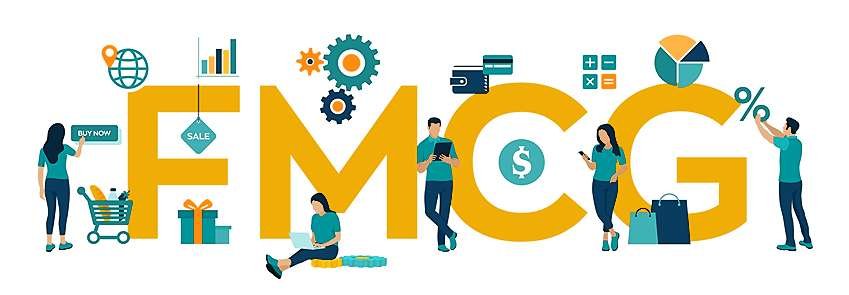- Amelia Sabestine
- 0 Comments
- 1285 Views
In the present day, it’s easy to become lost in the lingo of marketing and search engine optimization because of the extensive use of SEO acronyms and marketing acronyms. Marketing efforts, website traffic, and search engine rankings can all be evaluated with the use of these abbreviations.
Without the use of acronyms, communication in these fields would be significantly more time-consuming and difficult, increasing the likelihood that crucial information and insights would be overlooked.
Aside from saving time, knowing common acronyms is a mark of professionalism in any field. The ability to use marketing and SEO acronyms shows a mastery of the most cutting-edge methods, tools, and practices in one’s chosen sector.
To boost their marketing efforts, expand their internet presence, and ultimately succeed, businesses and marketers need to be familiar with and make use of these SEO acronym meanings.
This article will explain the value of acronyms in marketing and search engine optimization, and it will also provide a glossary of some of the more used ones.
Importance of acronyms in marketing
Use marketing acronym with caution and always provide explanations for individuals who aren’t familiar with them. Some people may feel alienated or confused if you use acronyms too frequently or in the wrong context. In a presentation or document, when the reader may be unfamiliar with the jargon of your sector, it is usually preferable to explain the complete term before introducing an abbreviation.
1. Efficiency
Many marketing functions and SEO abbreviations and concepts are difficult to explain without resorting to jargon. Acronyms are a useful tool for shortening and sharing lengthy explanations of complicated ideas. As an illustration, the phrase “search engine optimization” can be shortened to “SEO” without losing any of its meaning.
2. Standardization
Acronyms are useful in marketing and search engine optimization because they let specialists in different fields speak the same language. As a result, marketers and SEO experts may have clearer conversations and prevent misunderstandings. If someone says “CTR,” for instance, everyone in the room knows they’re talking about an ad or website’s click-through rate.
3. Memorability
Brands and advertising campaigns can benefit from the usage of acronyms because they are often easy to remember and even catchy. In marketing, for instance, the abbreviation “FOMO” (fear of missing out) has become widely used to express the sense of urgency or scarcity that can encourage consumers to make a purchase. Marketing efforts that use acronyms like these tend to be more remembered and shareable throughout social media.
4. Searchability
Acronyms are helpful for SEO principals because they are frequently used as search phrases. For information on pay-per-click advertising, for instance, a user may use the SEO abbreviation “PPC” rather than enter the whole word into a search engine. Using appropriate acronyms in your article can boost its rank in search engine results and bring in more readers.
Marketing acronyms
These marketing acronyms are useful for businesses because they provide a structure for assessing several facets of marketing effectiveness, such as new client acquisition, existing customer retention, and optimization. Incorporating these abbreviations into your marketing efforts will help your company expand and profit.
1. SEO – Search Engine Optimization
It is one that you will be familiar with no need to ask Google what the acronym SEO stands for. However, it is useful for companies since it raises a site’s profile in SERPs. In turn, this may result in more visitors, potential customers, and ultimately, sales.
2. PPC – Pay-Per-Click
Pay-per-click (PPC) advertising is useful for companies since it brings in highly focused visitors at a low cost per click.
3. Relationship Management with Customers (CRM)
Customer satisfaction, retention, and loyalty can all be boosted as a result of better interaction and data management.
4. CTR – Click-Through Rate
Your adverts or content’s efficacy can be determined. When the CTR is high, users are more likely to interact with the site.
5. ROI – Return on Investment
It’s useful for gauging how well your marketing and other business expenditures are paying off.
6. KPI – Key Performance Indicator
You can use it as a yardstick to see how far along you are in reaching your aims.
7. CTA – Call to Action
They push visitors to do something, like buy something or fill out a form.
8. UX – User Experience
Conversion rates and sales can be negatively impacted if users have a negative experience with the website or product.
9. SMM – Social Media Marketing
It facilitates interaction with your intended audience via various social media channels.
10. PR – Public Relations
You can improve your standing in the eyes of those who matter to your success by doing this.
11. CPC – Cost-Per-Click
It aids in calculating the ROI of pay-per-click (PPC) advertising initiatives.
12. CPL – Cost-Per-Lead
It is useful for calculating the ROI of various lead generation strategies.
13. CPM – Cost-Per-Thousand Impressions
Measure the ROI of your display advertising efforts with ease.
14. SERP – Search Engine Results Page
They can have an impact on how well your site and its content perform in search engine results.
15. SEM – Search Engine Marketing
It can increase your site’s visibility in both sponsored and natural search results, bringing in qualified visitors.
16. MQL – Marketing Qualified Lead
They are useful for locating possible buyers who have already shown interest in your product.
17. SQL – Qualified Lead Sale
These are leads that the sales team has already evaluated and determined have a high probability of becoming paying clients.
18. B2B – Business-to-Business
Selling to other businesses demands a different marketing strategy than selling directly to consumers.
19. B2C – Business-to-Consumer
Direct to consumer sellers use a strategy distinct from business-to-business (B2B) marketers.
20. CTM – Call Tracking Metrics
Call tracking software is useful for businesses that rely on phone calls for lead generation or sales since it allows for detailed analysis of how well various phone-based marketing strategies are doing.
21. CRM – Content Relationship Management
Businesses that produce and disseminate information will find this tool useful for managing and analyzing their material to boost readership and sales.
22. CDP – Customer Data Platform
To enhance customer experiences and marketing efficacy, it facilitates the collection, organization, and analysis of consumer data from several sources.
23. ROAS – Return on Advertising Spend
It’s a useful tool for monitoring the results of marketing initiatives and making the most of available funds.
24. A/B Testing
Using A/B testing, businesses may see how different iterations of their content, adverts, or website fare in the eyes of their target audience.
25. DMA – Direct Marketing Association
The Direct Marketing Association (DMA) is vital to businesses because it establishes standards for conducting moral and successful direct marketing campaigns.
26. LTV – Customer Lifetime Value
It’s useful for gauging the lifetime value of consumers and adjusting marketing and retention efforts accordingly.
27. CPCV – Cost-Per-Completed-View
It’s useful for businesses that buy video commercials since it calculates how much it costs for a viewer to see an entire commercial.
28. CRO – Conversion Rate Optimization
You can use it to boost the number of leads and purchases made from your website or landing page.
29. API – Application Programming Interface
To automate marketing operations and boost productivity, businesses that utilize third-party software or solutions can integrate and share data between the various systems.
30. GA – Google Analytics
It helps you improve your website and advertising campaigns by giving you detailed information on visitors, their actions, and the success of your campaigns.
31. NPS – Net Promoter Score
It’s a way to see how well a company is doing to satisfy its clientele, as measured by their level of loyalty and happiness.
32. UGC – User-Generated Content
Brand exposure and trust can be increased by using user-generated material like reviews and social media posts.
33. WOM – Word of Mouth
It is a valuable and inexpensive method of advertising that relies on word-of-mouth promotion from happy consumers.
SEO Acronyms
Website design, content writing, keyword analysis, link building, analytics, and many other aspects of search engine optimization are all represented by acronyms. You’ll be able to have a more fruitful conversation with SEO experts about how to boost your website’s search engine rankings if you take the time to familiarize yourself with these SEO-meaning acronyms.
Acronym |
Meaning |
| AJAX | Asynchronous Javascript and XML |
| AOV | Average order value |
| API | Application Program Interface |
| AR | Augmented reality |
| AS | Article Submission |
| ASP | Application service provider |
| ASP.NET | Active Server Pages Network Enabled Technologies |
| ATD | Agency trading desk |
| AV | AltaVista |
| B2B | Business to Business |
| B2C | Business to Consumer |
| BH | Blackhat |
| BHW | Blackhat world |
| BL | Backlink |
| BR | Bounce rate |
| ccTLD | country code top-level domain |
| CAPTCHA | Completely Automated Public Turing Test to Tell Computers and Humans Apart |
| CF | Citation flow |
| CGI | Common Gateway Interface |
| CLV | Customer lifetime value |
| CMS | Content Management System |
| COA | Cost of Acquisition |
| CPA | Cost Per Acquisition |
| CPC | Cost per Click |
| CPI | Cost Per Impression |
| CPL | Cost Per Lead |
| CPM | Cost Per Thousand |
| CPO | Cost Per Order |
| CPV | Cost Per View |
| CR | Conversion rate |
| CRM | Customer relationship management |
| CRO | Conversion Rate Optimization |
| CSE | Comparison Shopping Engine/Custom Search Engine |
| CSS | Cascading Style Sheets |
| CTA | Call to Action |
| CTR | Click Through Rate |
| CX | Customer Experience |
| DC | Data Center |
| DFO | Data Feed Optimization |
| DKI | Dynamic Keyword Insertion |
| DLP | Directory Listings Page |
| DLR | Deep Link Ratio |
| DMCA | Digital Millennium Copyright Act |
| DMOZ | Directory – Mozilla |
| DMP | Data management platform |
| DNS | Domain name system |
| DR | Domain Ranking |
| DR | Direct response |
| DS | Directory Results Pages |
| DRPs | Directory Submission |
| DSP | Demand-side platform |
| DSRP | Directory Search Results Page |
| ECPC | Enhanced Cost Per Click |
| EMD | Exact Match Domain |
| EPC | Earnings per click |
| EPM | Earnings per thousand |
| ERD | Education referring domains |
| ESP | Email service provider |
| FBML | Facebook Markup Language |
| FCP | Frequently Cached Page |
| FFA | Free For All Pages |
| FTP | File transfer protocol |
| G+ | Google Plus |
| GA | Google Analytics |
| GAP | Google Advertising Professional |
| GAS | Guaranteed Article Submission |
| GDS | Guaranteed Directory Submission |
| GIS | Google Image Search |
| GIY | Google It Yourself |
| GRD | Government referring domains |
| GSC | Google Search Console |
| GTM | Google Tag Manager |
| GUI | Graphical user interface |
| GWT | Google Webmaster Tools |
| GYM | Google Yahoo MSN |
| H1 | Level 1 heading markup |
| H2 | Level 2 heading markup |
| H3 | Level 3 heading markup |
| H4 | Level 4 heading markup |
| H5 | Level 5 heading markup |
| Href | Hypertext Reference |
| HTML | Hypertext Markup Language |
| HTTP | HyperText Transfer Protocol |
| HTTPS | Hypertext Transfer Protocol Secure |
| IBL | In Bound Links |
| IDF | Inverse Document Frequency |
| IFTTT | If this then that |
| IM | Internet Marketing |
| IP | Internet Protocol (Address) |
| ISP | Internet Service Providers |
| JGI | Just Google It |
| LB | Link Building |
| LPO | Landing Page Optimization |
| LSA | Latent Semantic Analysis |
| LSEO | Local SEO |
| LSI | Latent Semantic Indexing |
| LTKW | Long Tail keyword |
| LTV | Lifetime value |
| MCP | Moderately Cached Page |
| MFA | Made For Advertising |
| MQL | Marketing qualified Lead |
| MTO | Meta Tags Optimization |
| MVT | Multivariate testing |
| NAP | Name Address Phone Number |
| NSEO | Negative SEO |
| OBL | Outbound Link |
| ODP | Open Directory Project |
| ORM | Online Reputation Management |
| OS | Operating system |
| OSE | Open Site Explorer |
| OWBL | One Way Back Link |
| P4P | Paid For Placement |
| PBN | Private Blog Network |
| Portable Document Format | |
| PFI | Pay For Inclusion |
| PFL | Paid For Listings |
| PFP | Pay for Performance |
| PHP | Hypertext Preprocessor |
| PPC | Pay Per Click |
| PPCSE | Pay Per Click Search Engine |
| PPL | Pay Per Lead |
| PPR | Pay Per Rank |
| PPS | Pay Per Sale |
| PR | Press Release |
| PR | Page Rank |
| PV | Pageviews |
| QA | Quality assurance |
| QS | Quality score |
| RD | Referring Domains |
| RFI | Request for information |
| RI | Regular index |
| RM | Reputation management |
| ROI | Return on Investment |
| RON | Run of network |
| ROR | Ruby on Rails |
| ROS | Run of site |
| RSS | Simple Syndication or Rich Site Summary |
| RTD | Real-time data |
| RTL | Regional Long Tail |
| SaaS | Software as a service |
| SB | Social Bookmarking |
| SD | Semantic Distance |
| SE | Search Engine |
| SEM | Search Engine Marketing |
| SEO | Search engine optimization |
| SEO | Search Engine Optimization Performance |
| SEP | Search Engine Positioning |
| SER | Search Engine Ranking |
| SERM | Search Engine Results Management |
| SERP | Search Engine Results Page |
| SES | Search Engine Strategies |
| SEW | Search Engine Watch |
| SI | Supplemental Index |
| SLA | Service level agreement |
| SMB | Small and Medium Businesses |
| SMEs | Small And Medium-Sized Enterprises |
| SMM | Social Media Marketing |
| SMO | Social media optimization |
| SMP | Social media platform |
| SNS | Social Networking Service |
| SQL | Structured Query Language |
| SRM | Search Reputation Management |
| SSI | Server Side Includes |
| SSL | Secure Sockets Layer |
| SSP | Supply-side platform |
| STW | Search The Web |
| SWL | SiteWide Link |
| TBPR | Toolbar PageRank |
| TF | Trust Flow |
| TF-IDF | Term frequency-inverse document frequency |
| TLD | Top-level domain |
| TLP | Top Level Page |
| TOS | Terms of service |
| TR | Trust Rank |
| TSETSB | The Search Engine That Spam Built |
| TTF | Topical Trust Flow |
| UCD | User-centric design |
| UI | User interface |
| UR | Url Ranking |
| URL | Uniform Resource Locator |
| USP | Unique Selling Point |
| USP | Unique selling proposition |
| UTM | Urchin Tracking Module |
| UV | Unique visitor |
| UX | User experience |
| VA | Virtual Assistant |
| VIPS | Visual-block Page Segmentation |
| VOD | Video on demand |
| W3C | World Wide Web Consortium |
| WH | Whitehat |
| WMT | Web Master Tools |
| WMW | Webmaster World |
| WOMM | Word-of-mouth marketing |
| WWW | World Wide Web |
| WYSIWYG | What you see is what you get |
| XHTML | Extensible HyperText Markup Language |
| XML | Extensible Markup Language |
| Y! | Yahoo! |
| Y2K | Year Two Thousand |
| YOY | Year on year |
| YTD | Year to date |
| 301 | Resource Moved Permanently (A permanent redirect code to a new domain or location) |
| 302 | Resource Moved Temporarily (A temporary redirect code to a new domain or location) |
| 401 | Unauthorized Access to Resource (requires authentication) |
| 403 | Forbidden: Access not allowed (server understood the request but refuses to fulfill it) |
| 404 | Resource (page) not found |
| 503 | The server is unavailable (usually a temporary response due to overloading or maintenance) |
Role of Understanding SEO Acronyms in Business and Google Search
To better interact with SEO pros and evaluate the return on investment, businesses should familiarize themselves with the various acronym SEO. For instance, understanding the meaning of acronyms like DA (Domain Authority) and PA (Page Authority) can assist organizations in determining the value of inbound connections to their website.
Also, using Google effectively requires familiarity with both SEO and Google acronyms. With so many people using Google every day, any company that takes the time to tweak its site to better suit Google’s needs will see a huge boost in traffic.
However, Google’s algorithms are intricate and ever-changing, making it difficult to always be on the cutting edge of the industry. To make sure a company’s website is up to date with Google’s search criteria, employees should be familiar with SEO acronyms like EAT (Expertise, Authority, Trustworthiness) and BERT (Bidirectional Encoder Representations from Transformers), and many others listed above.
Conclusion
SEO acronyms are essential for SEO acronym businesses looking to succeed in digital marketing and Google search. By mastering industry-specific terms and metrics, businesses can make data-driven decisions, communicate more effectively with SEO professionals, and optimize their online presence for search engine algorithms. Whether you are a seasoned SEO expert or just starting, understanding SEO acronyms is a must for staying ahead of the competition and achieving your digital marketing goals.







